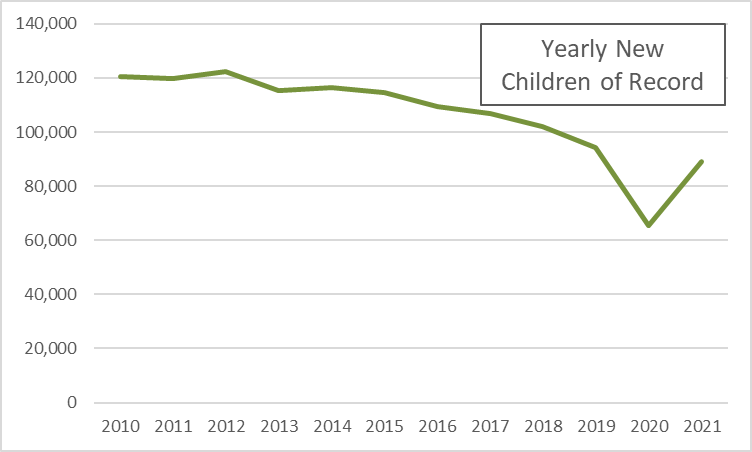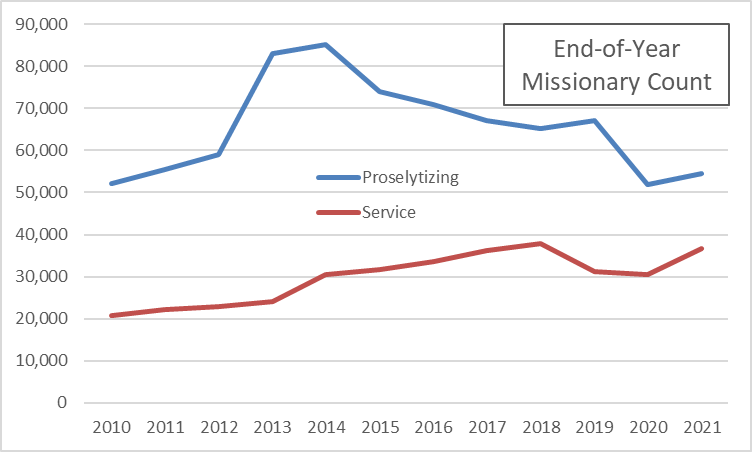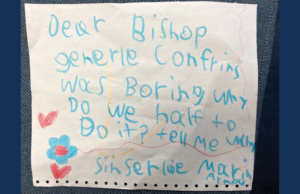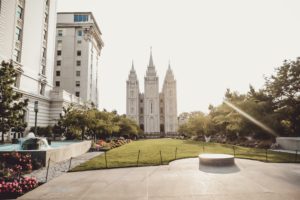In this post, I just want to make a small point about the Church’s report of new children of record in the annual statistical report. Here’s a graph showing annual end-of-year counts since 2010.

The count was flat for several years, but then started falling consistently from year to year starting in 2015. And then of course it fell off a cliff in 2020, going from 94,000 all the way to 65,000, a drop of over 30%. (For the rest of this post, I’m going to abbreviate thousands as “K,” so 94K is 94,000.)
It seems clear that the 2020 decline was caused by COVID. But there are (at least) two possible mechanisms that could be driving the effect of COVID on new children of record. One is that COVID affected birth rates. I had the idea in the back of my head that economic downturns are often associated with declining birth rates, and a quick Google turns up at least one paper that suggests that that’s true. However, given the nine month length of human gestation and the fact that COVID was officially declared a pandemic on March 11, 2020, it seems pretty unlikely that couples were changing their childbearing plans and having the effects show up before the end of the year.
The other possible mechanism by which COVID could affect children of record is through church activity. The children of record count is effectively a count of children born to or adopted by LDS families where at least one parent is active enough to get them recorded on Church records. With COVID pushing church meetings to be online, or suspended entirely, it’s not surprising that families were less diligent about recording their births and adoptions with their local units than they would have been in ordinary times. So I think the big drop from 2019 to 2020 makes sense.
What is striking, though, is that the 2020 to 2021 recovery is smaller than I would expect. New children of record rebounded from 65K to 89K, which seems like a healthy gain. But if my guess that people were just lax in recording new births and adoptions is right, there should have been a big backlog from 2020 that got recorded as people largely returned to attending church in person in 2021. Really, the 2021 count should have exceeded 2019 if this was the case.


